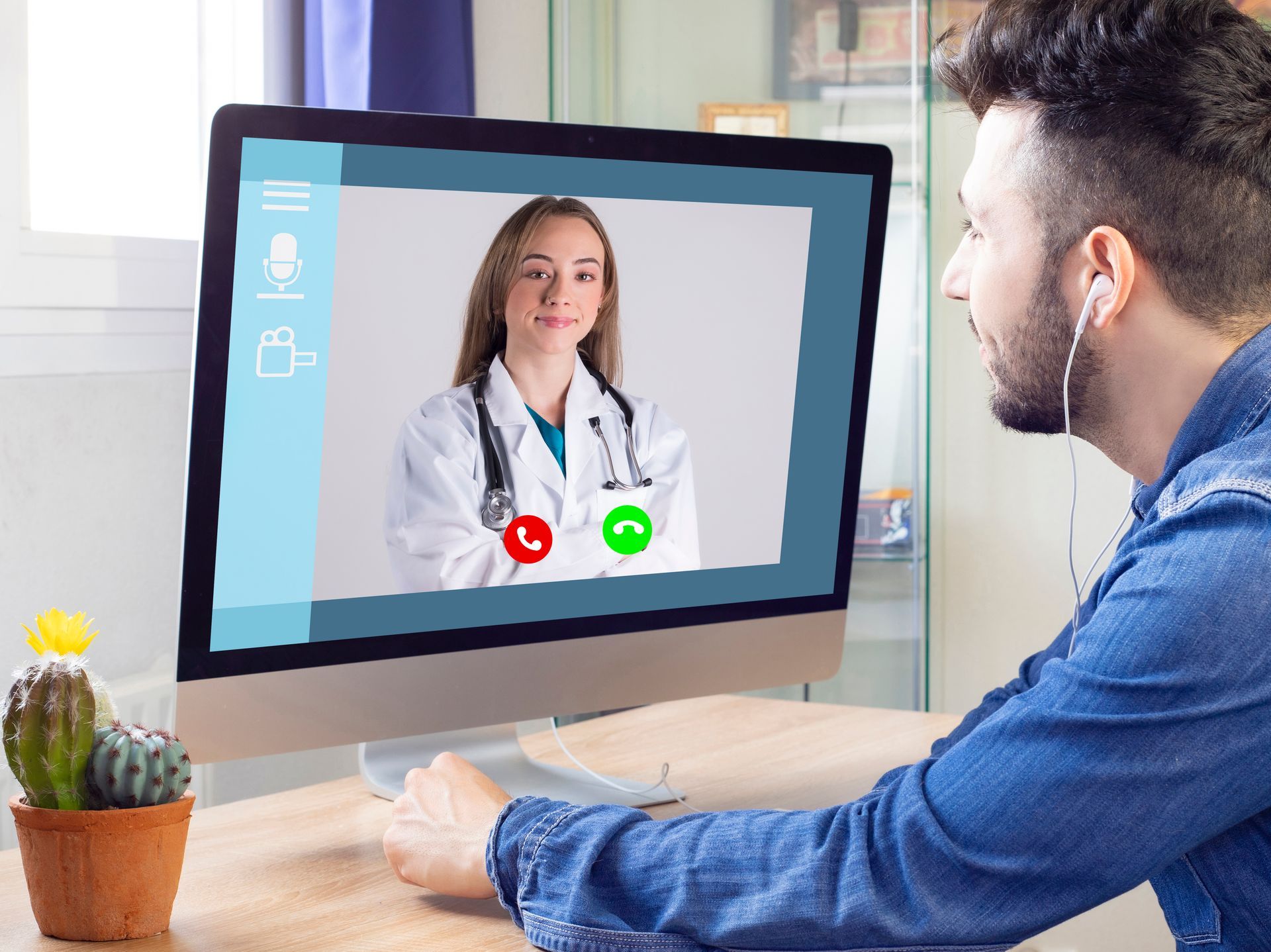Billing Tips for Telehealth Services

As the telehealth industry continues to grow, so do the billing and coding challenges faced by providers. Even though face-to-face consultations and telehealth have some similarities, there are some key differences to be aware of. Fortunately, there are ways for providers to ensure they get paid appropriately for their services.
Read on to learn what best practices to adapt for telehealth billing.
The Rise of Telehealth: An Overview
Telehealth or telemedicine is an increasingly important aspect of healthcare delivery. The combination of health IT, telecommunications, and wireless technology allows patients to connect with their doctors and receive care remotely, some even on a 24/7 basis. The healthcare delivery model uses telecommunications technology to provide medical services, including clinical care, electronic health records (EHRs), and medical education. This method can include things like
- video conferencing
- safe or cloud-based email or messaging service
- phone calls
- remote patient monitoring (RPM)
- e-visits through a patient portal
The use of telehealth can help improve access to care for rural residents, reduce costs for patients with chronic conditions who may require frequent monitoring, and improve the quality of care for patients with chronic conditions who may lack access to specialists.
Despite being around for a long time, telehealth has recently seen an uptick in popularity and adoption due to the following factors:
- widespread use of mobile devices, advances in technology, and data transmission speeds and costs
- an increase in chronic disease management and an aging population
- expansion of telehealth benefits by The Centers for Medicare & Medicaid Services (CMS) under the 1135 waiver authority and Coronavirus Preparedness and Response Supplemental Appropriations Act
- Covid 19 pandemic face-to-face restrictions
Telehealth will be ideally suited to complement in-person visits over the next few years rather than replace them. The following information is from the American Medical Association's (AMA) recent statistics about telehealth trends:
- About 85% of physicians say that they are currently using telemedicine.
- According to 85% of respondents, telehealth increased care timeliness.
- 75% of respondents reported that telehealth helped them provide high-quality care.
- More than 70% of respondents were motivated to enhance their use of telehealth.
6 Telemedicine Coding and Billing Strategies
Telemedicine billing services can be confusing and involves a lot of paperwork, so it's essential to know how to avoid common mistakes. The following tips will ensure your practice receives the full amount it's due:
1. Check patient eligibility in advance of the visit
Patients should be eligible for telehealth services prior to scheduling an appointment with their doctor or therapist over video chat or phone call. Otherwise, they may not be able to receive reimbursement from their insurance company. You can call the patient's insurance company or check their online portal. This way, you can be sure that the pater will cover the patient and provider for the services they receive.
Have the telemedicine insurance verification form on hand. It is a form that most insurance companies require, and one can download it from their website. It verifies that the patient is eligible for telemedicine services and helps streamline your claims process.
2. Get to know and understand each payer's guidelines for telemedicine
In telemedicine billing, there are three major types of payers: Medicare, Medicaid, and commercial payers. If you are unsure about coverage or have questions about particular plans, you may wish to contact the insurance carrier. This way, you have an assurance of what types of telehealth they cover and if the telehealth service your patient needs is a covered benefit. This step will help you avoid costly coding errors and ensure compliance regarding documentation, patient eligibility, and other requirements.
- Medicare Telehealth Payment Eligibility Analyzer: An online tool that allows you to check if an address qualifies for Medicare telehealth originating site reimbursement.
3. Learn about your state's laws and regulations on telemedicine
Different states have different regulations regarding telehealth reimbursement, so it's essential to understand your state's specific policies before submitting any claims. In addition, some states have restrictions on where you can practice —in-person or over video — while others require a physician to be physically present during an e- consultation. This may oblige you to get necessary licenses across state lines.
The American Telemedicine Association has an excellent guide to state regulations. Or you can also check (NCSL) National Conference of State Legislatures' page for State Telehealth Policies and (CCHP) Center for Connected Health Policy Finder.
4. Stay up-to-date on new telemedicine rules
Any policy listed in this article is subject to change at any given time. There is a possibility that some telehealth codes will not be covered after the Public Health Emergency Declaration has ended. We, therefore, recommend you check the CCHP website for an up-to-date list of Medicaid telehealth policies for your state.
5. Choose the correct telehealth billing codes
In terms of billing for telehealth services, there are a lot of different codes to choose from. Be sure to use the correct code to avoid delays in reimbursement. The Medicare program is currently covering more than 100 telehealth services [As of March 2020]. Despite this, the status of some CPT and HCPCS codes may change. The latest data from CMS indicates that certain telehealth services added to the Medicare telehealth services list during the COVID-19 public health emergency will be in effect until December 31, 2023.
The CMS has published guidelines for what codes to use for telehealth services. See the entire List of CMS Telehealth Services for Calendar Year 2022 [Updated June 16, 2022]
Other Updates:
Modifier 93: Synchronous Telemedicine Service Rendered Via Telephone or Other Real-Time Interactive Audio-Only Telecommunications System [Effective 1/1/2022]
What is it: "Synchronous telemedicine service is defined as a real-time interaction between a physician or other qualified health care professional and a patient who is located away at a distant site from the physician or other qualified healthcare professional. The totality of the communication of information exchanged between the physician or other qualified health care professional and the patient during the course of the synchronous telemedicine service must be of an amount and nature that is sufficient to meet the key components and/or requirements of the same service when rendered via face-to-face interaction."
- Do check with other payers if they added this modifier; some may still use 95 (code for telehealth provided in real-time)
- See CPT Codes Applicable to Modifier 93
Source: CPT® Appendix T and Modifier 93: Audio-only medical services
POS 02: Telehealth Provided Other than in Patient's Home
What is it: "The location where health services and health-related services are provided or received, through telecommunication technology. The patient is not located in their home when receiving health services or health-related services through telecommunication technology."
Source: New/Modifications to the Place of Service (POS) Codes for Telehealth
POS 10: Telehealth Provided in Patient's Home
What is it: "The location where health services and health-related services are provided or received, through telecommunication technology. The patient is located in their home (which is a location other than a hospital or other facility where the patient receives care in a private residence) when receiving health services or health-related services through telecommunication technology. "
Source: New/Modifications to the Place of Service (POS) Codes for Telehealth
6. Do thorough post-visit documentation
The best way to ensure accurate billing is to do thorough post-visit documentation. Even though some aspects of documenting in-person and telehealth visits are similar, there are a few things to consider. This factor includes the following:
- Patient Consent: Make sure you keep a record of the patient's consent to participate in a virtual appointment, either in writing or verbally.
- Length of Time of Visit: only bill the time spent with the provider, not with the clinical staff
- Distance Sites & Originating Sites: Medicare and some Medicaid programs expanded the definition of an originating site following the COVID-19 public health emergency. Moreover, a rural health clinic or federally qualified health center can bill Medicare for telehealth services as a distant site.
- Store & Forward vs. Real-Time Rules: Some states allow reimbursement for Asynchronous telehealth — also known as "store and forward" — where patients and providers exchange direct information before or after appointments (pictures, lab results, x-rays). In some states, providers must deliver telehealth services in "real-time". Thus, activities such as store-and-forward are not subject to reimbursement. Check State Rules on store and forward.
Telehealth is Here to Stay
— Partner with DrCatalyst!
Telemedicine is a growing healthcare service with many benefits for providers and patients alike. As it continues to evolve, the best practices for coding and billing will change along with it. Keeping up with the rules for virtual visits may be challenging. This is because they constantly change or may vary from payer to payer. To that, you must also do in-person visits and other administrative tasks.
At DrCatalyst, we make your job so much easier. Save your professional staff time- by hiring us to manage all coding, billing, and other administrative tasks for you. Our team of experts can do all the complicated stuff, like filing "perfect" claims that get reimbursed quickly and smoothly. This way, you can focus on taking care of your patients.
Schedule a free consultation today, and let's discuss solutions to streamline your processes!
Useful Links
Contact
3100 Carr 199, STE 202
San Juan, PR 00926-7660
United States
Useful Links
DrCatalyst | All Rights Reserved.
Contact
3100 Carr 199, STE 202
San Juan, PR 00926-7660
United States
Useful Links
DrCatalyst | All Rights Reserved.













